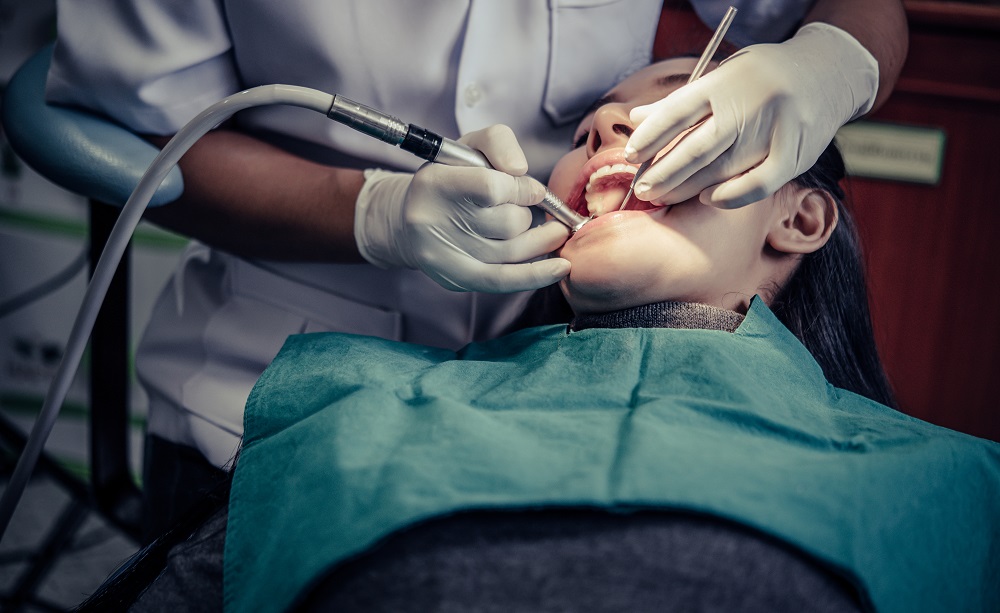
Getting a tooth extracted is often necessary to relieve pain, prevent infection, or make room for orthodontic treatment. However, the journey doesn’t end when the tooth is removed — it continues through a careful healing process. Understanding what happens after extraction can help you care for your mouth, avoid complications, and promote faster recovery.
In this complete guide, we’ll walk you through the tooth extraction healing process from Day 1 to full recovery, explain what’s normal and what’s not, and share expert tips for smooth healing.
🦷 What Happens During a Tooth Extraction?
Before diving into the healing tooth extraction process, it’s important to understand what occurs during the procedure.
Tooth extraction involves removing a tooth from its socket in the jawbone. Depending on the case, it may be a:
Simple extraction: The dentist loosens and removes a visible tooth using dental forceps.
Surgical extraction: Performed when a tooth is impacted or broken below the gumline, requiring a small incision in the gum.
Both types leave behind an open socket — the site where the tooth once sat — and this area needs time to heal through clot formation, tissue regeneration, and bone remodeling.
📅 Day-by-Day Tooth Extraction Healing Process
Let’s look at what typically happens each day after extraction.
Day 1: Clot Formation and Initial Recovery
The first 24 hours are crucial for forming a blood clot in the socket. This clot protects the underlying bone and nerves, acting as a foundation for new tissue growth.
What to expect:
Mild bleeding for a few hours after extraction.
Swelling and tenderness near the extraction site.
Slight difficulty opening your mouth or eating.
Care tips:
Bite gently on gauze to control bleeding.
Apply ice packs for 15–20 minutes every few hours.
Avoid rinsing, spitting, or using straws — these can dislodge the clot.
Stick to soft, cool foods like yogurt or smoothies.
Days 2–3: Managing Pain and Swelling
Pain and swelling usually peak within 48 hours. This is part of the body’s natural inflammatory response as it begins repairing the tissue.
What to expect:
Throbbing or dull pain near the extraction site.
Mild swelling or bruising of the cheek.
Small amounts of dried blood or saliva discoloration.
Care tips:
Take pain relievers as prescribed by your dentist.
Continue using ice packs to reduce swelling.
Rest well and keep your head elevated when sleeping.
Days 4–7: Early Healing and Reduced Pain
By the end of the first week, the healing tooth extraction process is well underway. The blood clot stabilizes, new gum tissue starts forming, and discomfort begins to fade.
What to expect:
Noticeable decrease in pain and swelling.
Slight soreness when chewing or brushing near the extraction site.
White or yellow tissue may appear — this is a normal part of healing, not an infection.
Care tips:
Gently rinse with warm salt water (½ teaspoon of salt in 1 cup of water) after meals.
Avoid touching the socket with your tongue or fingers.
Eat soft foods such as mashed potatoes, eggs, or soups.
Week 2: Gum Healing and Strength Recovery
During the second week, the extraction site continues to fill in with new gum tissue, and most people can resume normal eating and speaking comfortably.
What to expect:
Tenderness when brushing the area.
Minor itchiness as tissue regenerates.
Almost no swelling or pain.
Care tips:
Resume normal oral hygiene with a soft-bristled toothbrush.
Continue warm salt water rinses to prevent infection.
Avoid hard or sticky foods until the site fully closes.
Weeks 3–4: Tissue and Bone Repair
At this stage, the outer gum tissue has mostly healed. Beneath the surface, bone and connective tissue are still regenerating to close the socket entirely.
What to expect:
The extraction site looks smaller and pinkish.
Any remaining discomfort is minimal.
You can eat most foods again.
Care tips:
Maintain good oral hygiene.
Schedule a follow-up visit if recommended by your dentist.
Avoid smoking or alcohol until full healing occurs.
Months 2–3: Complete Bone Healing
Although the gum heals within a few weeks, full bone recovery can take several months — especially for larger teeth or surgical extractions. Over time, new bone grows in the socket to restore jaw strength and structure.
What to expect:
No pain or sensitivity.
The socket completely closed and covered by healthy gum tissue.
At this point, your healing tooth extraction is complete, and you can proceed with further dental work like implants or bridges if needed.
💊 Managing Pain During the Healing Process
Pain after extraction is normal, but you can ease it with these proven strategies:
Pain medication: Take ibuprofen or acetaminophen as directed by your dentist.
Cold compress: Apply an ice pack during the first 24 hours to control swelling.
Soft foods: Choose easy-to-chew meals such as oatmeal, pudding, or scrambled eggs.
Rest: Limit physical activity for a few days to allow the body to focus on healing.
Oral hygiene: Keep your mouth clean but avoid aggressive rinsing or brushing directly over the socket.
⚠️ Signs of Complications During Healing
While most extractions heal smoothly, complications can occur if aftercare isn’t followed correctly. Contact your dentist immediately if you notice any of the following:
Persistent or worsening pain after 3–5 days
Foul taste or bad breath that doesn’t go away
Swelling or pus discharge near the extraction site
Fever or chills
Visible bone or missing blood clot (sign of dry socket)
These symptoms may indicate infection or delayed healing and need professional attention.
🩺 Factors That Affect Tooth Extraction Healing
Several factors can influence how quickly your mouth recovers after a tooth extraction:
Type of extraction: Surgical extractions take longer to heal than simple ones.
Age and health: Younger, healthy individuals heal faster.
Smoking and alcohol: Both slow down blood flow and delay recovery.
Medications: Certain drugs (like blood thinners) can affect clotting.
Oral hygiene: Good hygiene promotes faster, infection-free healing.
🌿 Natural Remedies to Support Healing
Some natural remedies can help ease discomfort and promote faster healing tooth extraction recovery:
Salt water rinse: Reduces bacteria and soothes inflammation.
Clove oil: A natural antiseptic with mild anesthetic properties.
Aloe vera gel: Calms irritated tissue and encourages cell regeneration.
Turmeric: Known for anti-inflammatory benefits — can be used in warm water rinses.
Honey: Natural antibacterial agent that supports gum healing.
(Always consult your dentist before using home remedies.)
🍽️ What to Eat and Avoid After Tooth Extraction
Recommended foods:
Smoothies
Yogurt
Mashed potatoes
Soups and broths
Scrambled eggs
Applesauce
Avoid:
Hard or crunchy foods (nuts, chips)
Spicy or hot foods
Sticky sweets
Alcohol and carbonated drinks
Straws (can cause dry socket)
Proper nutrition supports tissue repair and reduces inflammation throughout the healing tooth extraction process.
Long-Term Care Tips After Extraction
Even after full healing, it’s important to maintain oral health to prevent future issues:
Brush and floss daily with gentle technique.
Visit your dentist regularly for checkups.
Replace missing teeth with an implant or bridge if recommended.
Avoid habits like smoking that can weaken gums and bone.
❓ Frequently Asked Questions (FAQs)
Q1: How long does it take for gums to heal after tooth extraction?
Most gum tissue heals within 2–3 weeks, but complete bone healing can take up to 3 months.
Q2: When can I eat normally after a tooth extraction?
You can begin eating soft foods after 24 hours and resume normal eating by the second week.
Q3: Is it normal to feel pain a week after extraction?
Mild soreness is normal, but worsening pain may signal dry socket or infection.
Q4: Can I brush my teeth after extraction?
Yes, but avoid brushing the extraction site for the first 24 hours. Resume gentle brushing after that.
Q5: What helps the extraction site heal faster?
Proper rest, hydration, good hygiene, and following your dentist’s instructions are key to quick recovery.
🦷 Final Thoughts
The tooth extraction healing process is a gradual but essential phase for restoring oral health. From the first day’s clot formation to complete bone healing over several weeks, every stage plays a vital role in your recovery.
By following post-extraction care instructions, eating wisely, and maintaining good hygiene, you can ensure your healing tooth extraction goes smoothly and pain-free. With patience and care, you’ll be back to a healthy, confident smile in no time.
Leave a Reply
You Might Like Also

A Complete Guide to Women’s Wellness Exams: Tests, Benefits & Frequency

Top Benefits of Working With a Dual Diagnosis Therapist for Recovery

Oral Food Challenge Procedure: How It Works, Risks & Expected Results

Affordable and Quality Dental Services at Marietta Dental Care

The Science Behind the Best Time to Get Your Flu Shot








